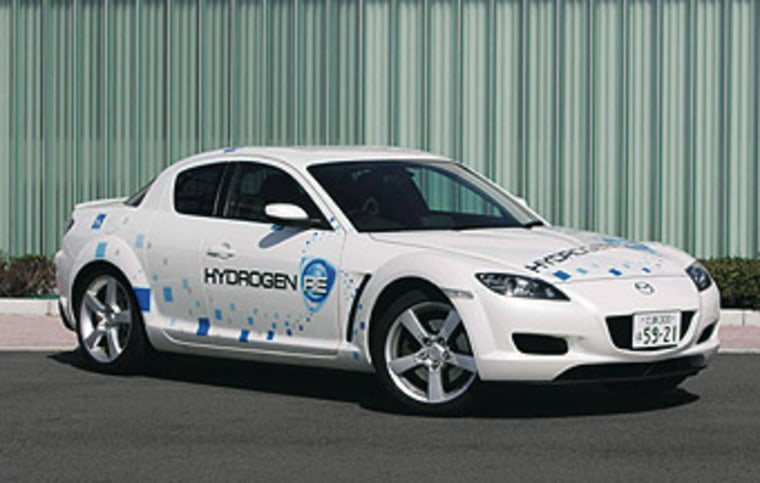Touting a third way on hydrogen, Mazda Motor Corp. on Wednesday said it received Japanese government approval to road test a modified RX-8 sports car that can run on both gasoline and hydrogen.
Most carmakers are focusing on running hydrogen through a fuel cell, while a few are looking at hydrogen in a traditional internal combustion engine. But Mazda is the first to try a "dual fuel" concept where a driver can select hydrogen or gasoline by flicking a switch.
Mazda said the rotary engine on its RX-8 "proved ideal for burning hydrogen as the intake area of a rotary engine stays relatively cool in temperature, reducing the tendency for engine backfire — a significant challenge in conventional engines."
When used as a fuel, hydrogen emits no carbon dioxide, a gas many scientists fear is warming the Earth, and virtually zero nitrogen oxides, a smog-forming pollutant.
The two fuels require two tanks, but that also gives the car a long driving range: 390 miles. Vehicles with hydrogen fuel cells are lucky if they can go 160 miles because of the difficulties of storing enough hydrogen in a space the size of a standard gas tank.
The hydrogen tank in the modified RX-8 is in the trunk, and Mazda noted the RX-8 still allows for two passengers in the back of the car.
Mazda said it will road test the vehicle, called the H2RE, for three months. Within two years it hopes to lease dual fuel vehicles to government entities and major companies.
"Because existing parts and production facilities are used," Mazda said in a press release, "the innovative engine can be built reliably at a relatively low cost."
But obstacles to widespread hydrogen use include the high cost of extracting it from fossil fuels or renewable energy like solar and wind. In addition, fuel cell stacks are still more expensive than combustion engines, and a new refueling infrastructure would have to be created.
